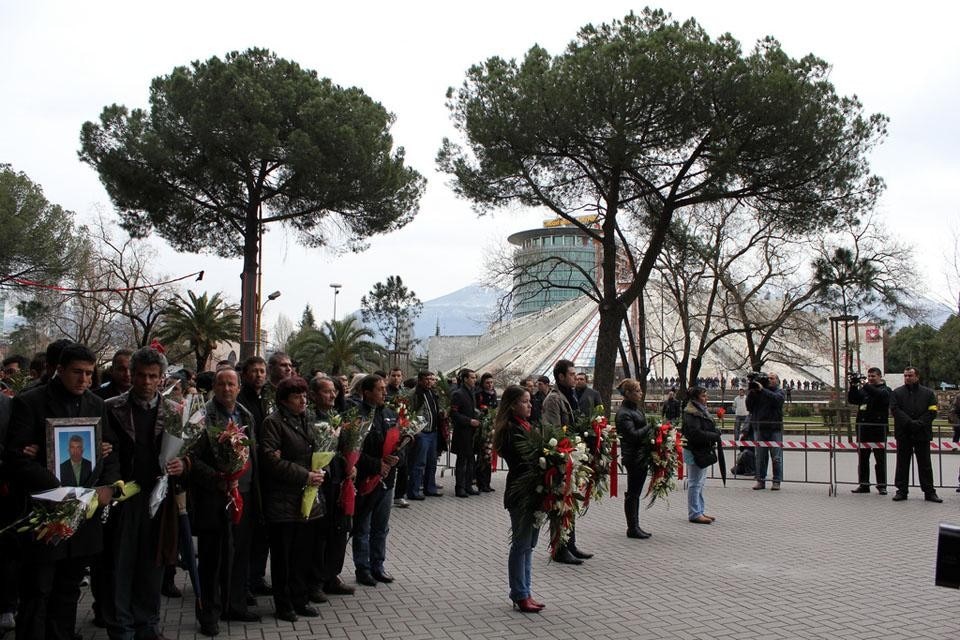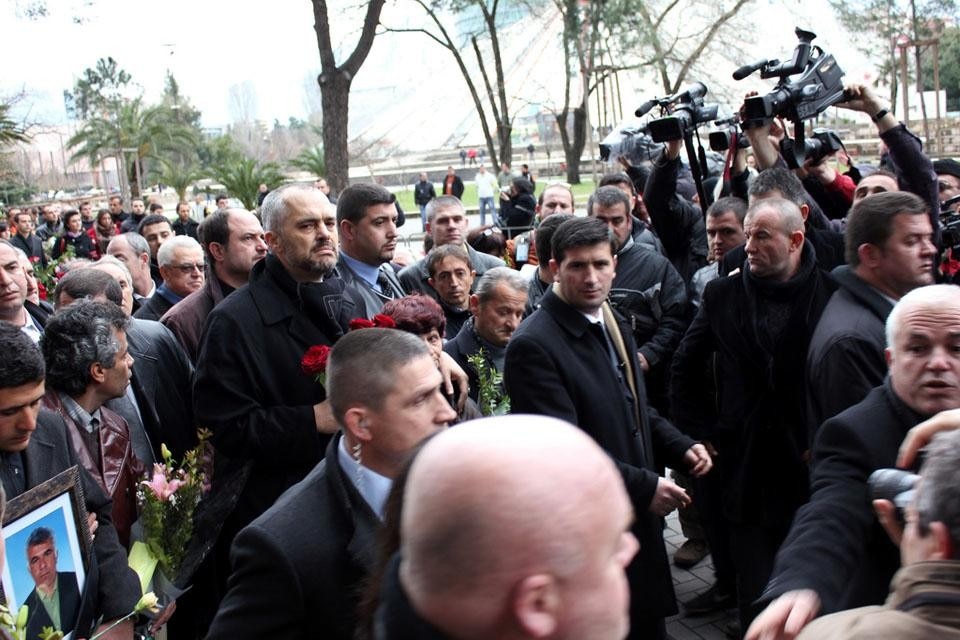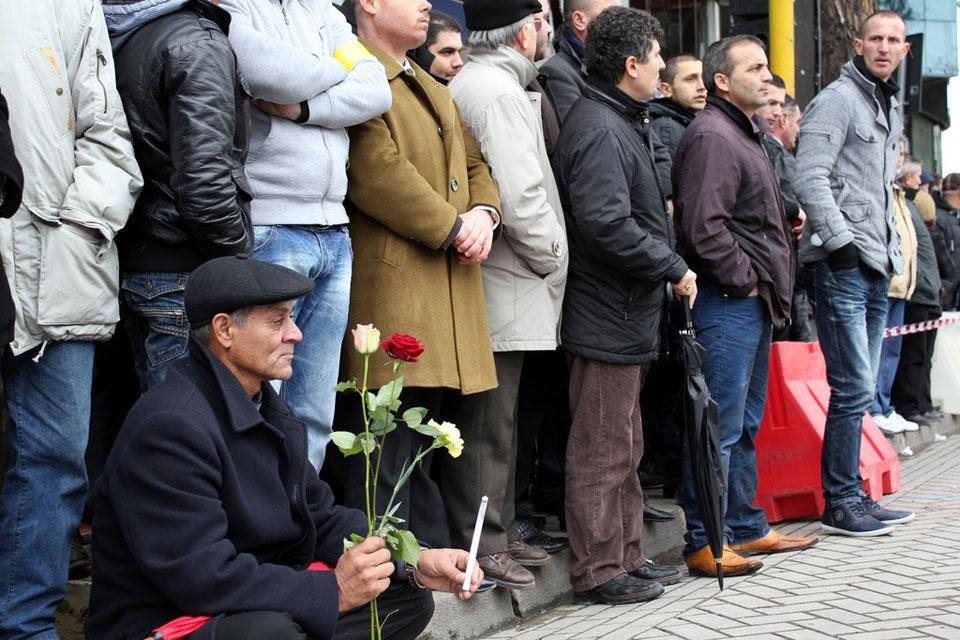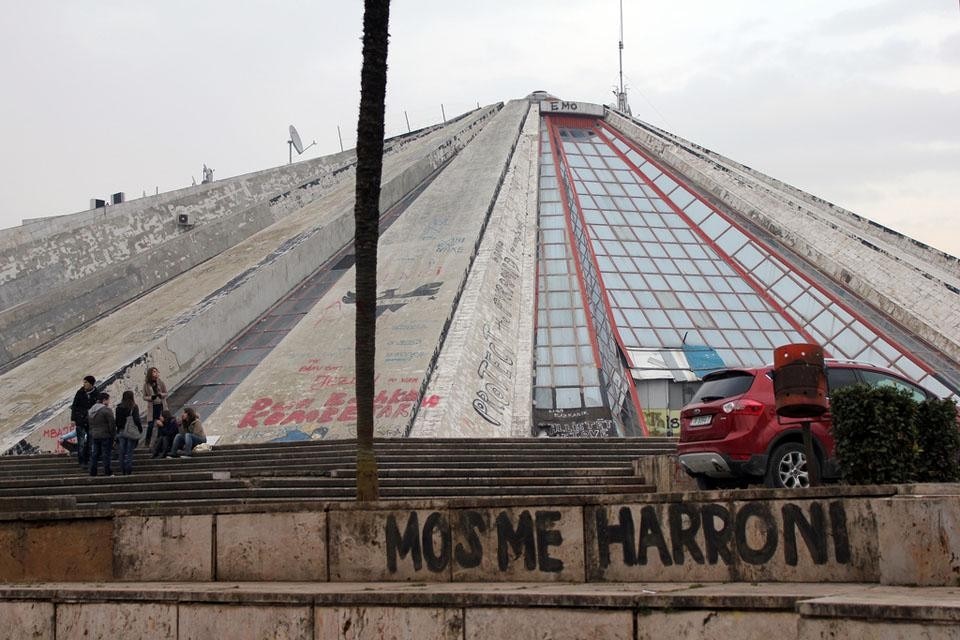The dictator Hoxha ruled over Albania, one of the poorest countries in Europe, from November 1944, when the Labor Party of Albania rose to power under his leadership, until the autocrat's death in 1985. Hoxha was a self-proclaimed orthodox Marxist-Stalinist and his radical stances dragged Albania into profound isolation from the rest of Communist Eastern Europe, also damaging relations with the USSR and the People's Republic of China. Supposed territorial defense became crucially important and, between 1972 and 1983, a paranoid feeling of constant threat found solace in the construction of 750,000 bunkers, still present all over Albania – a paradigmatic example of the way in which political strategies seek immediate visibility in physical space, aware of the hidden superiority of material symbolism over idealism.
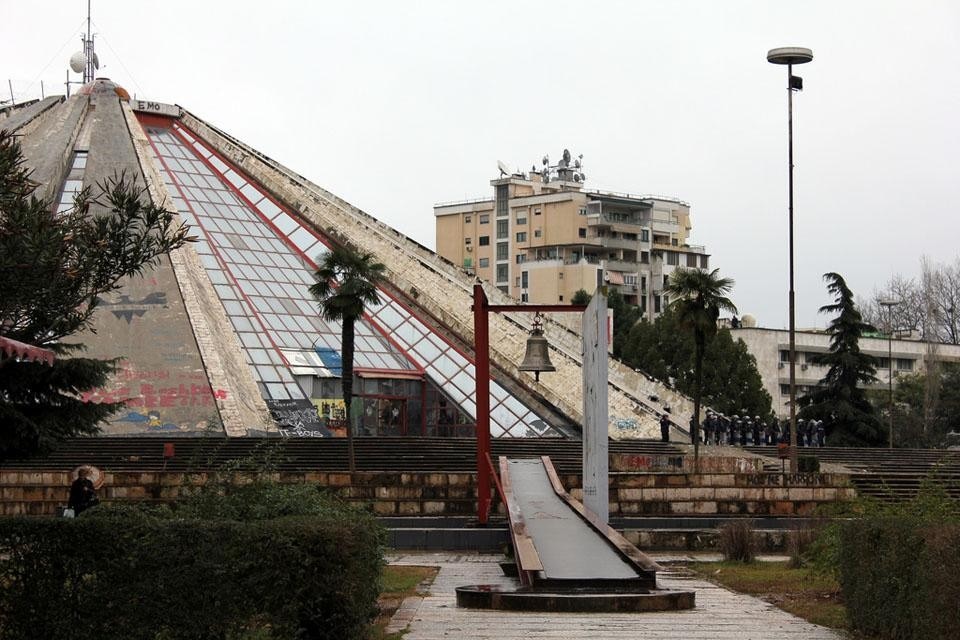
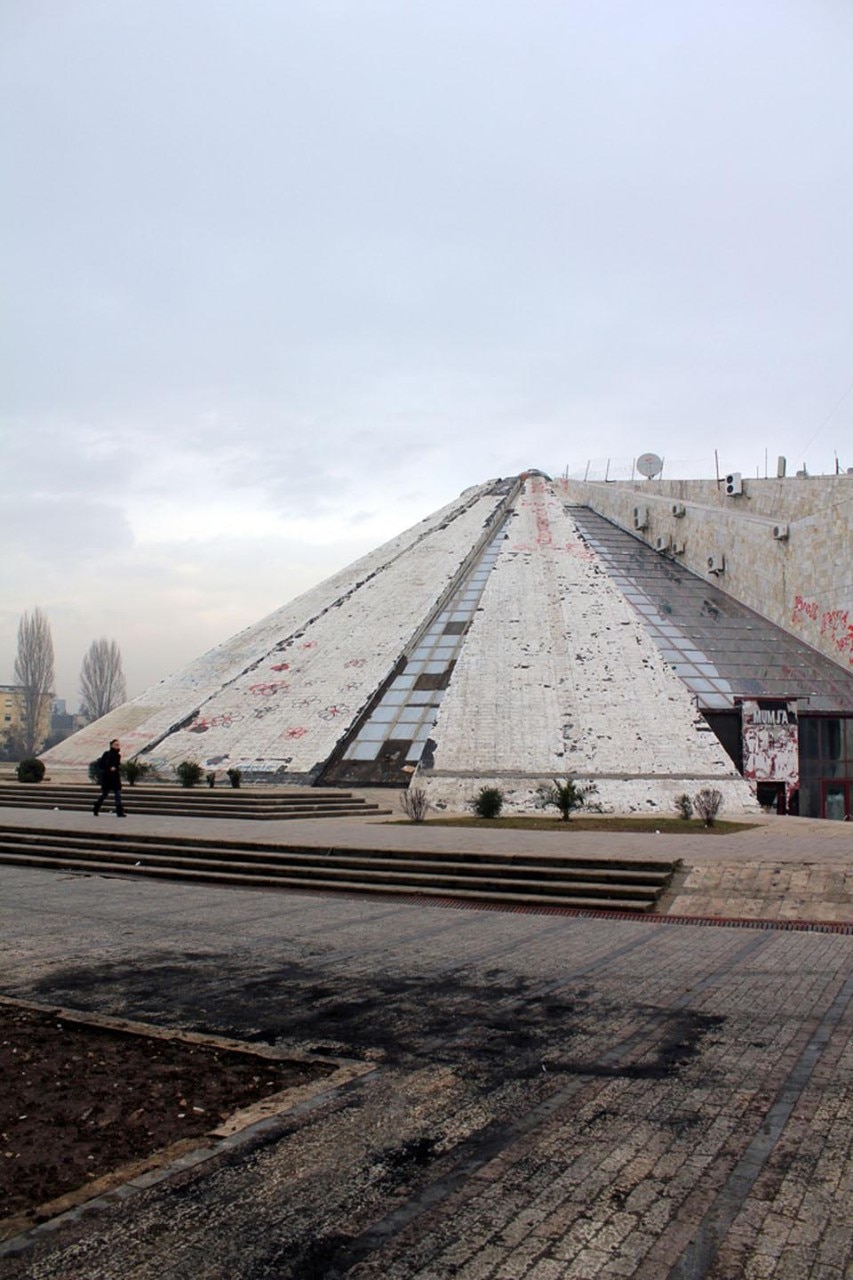
Knocking down the pyramid may constitute an unconscious act of revenge, anachronistic and contradictory, involving a symbol of a past political condition
